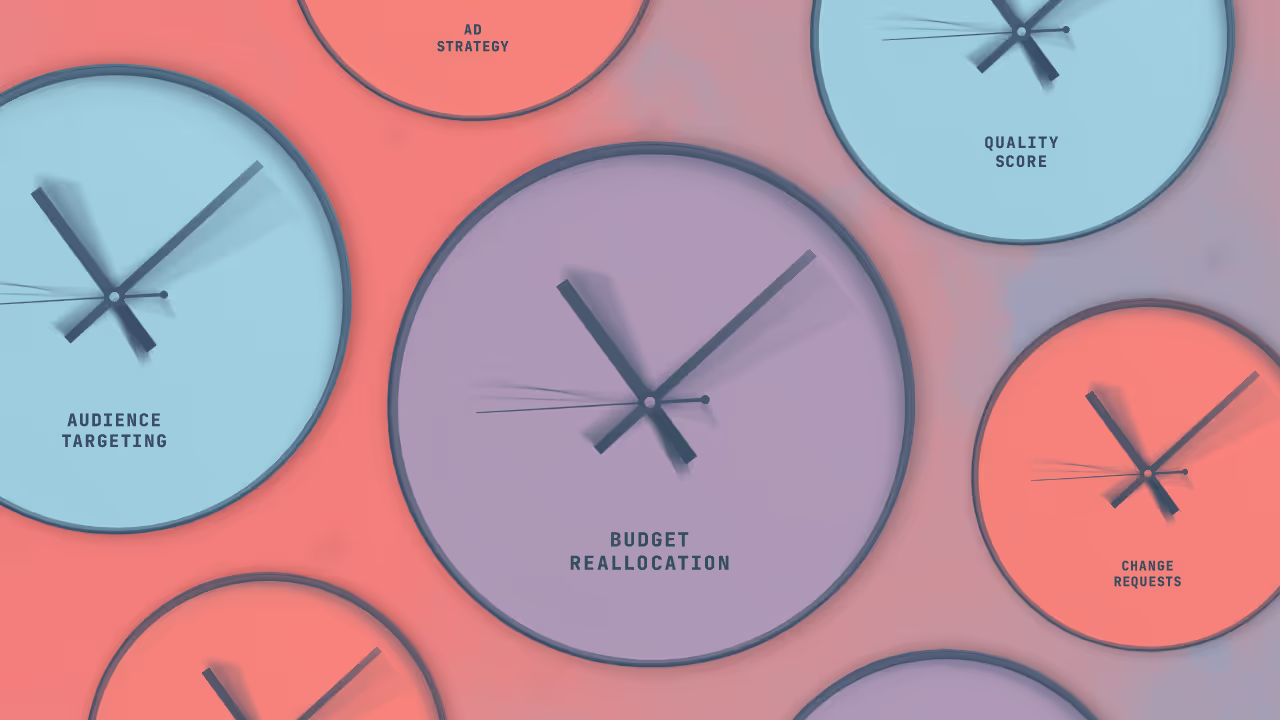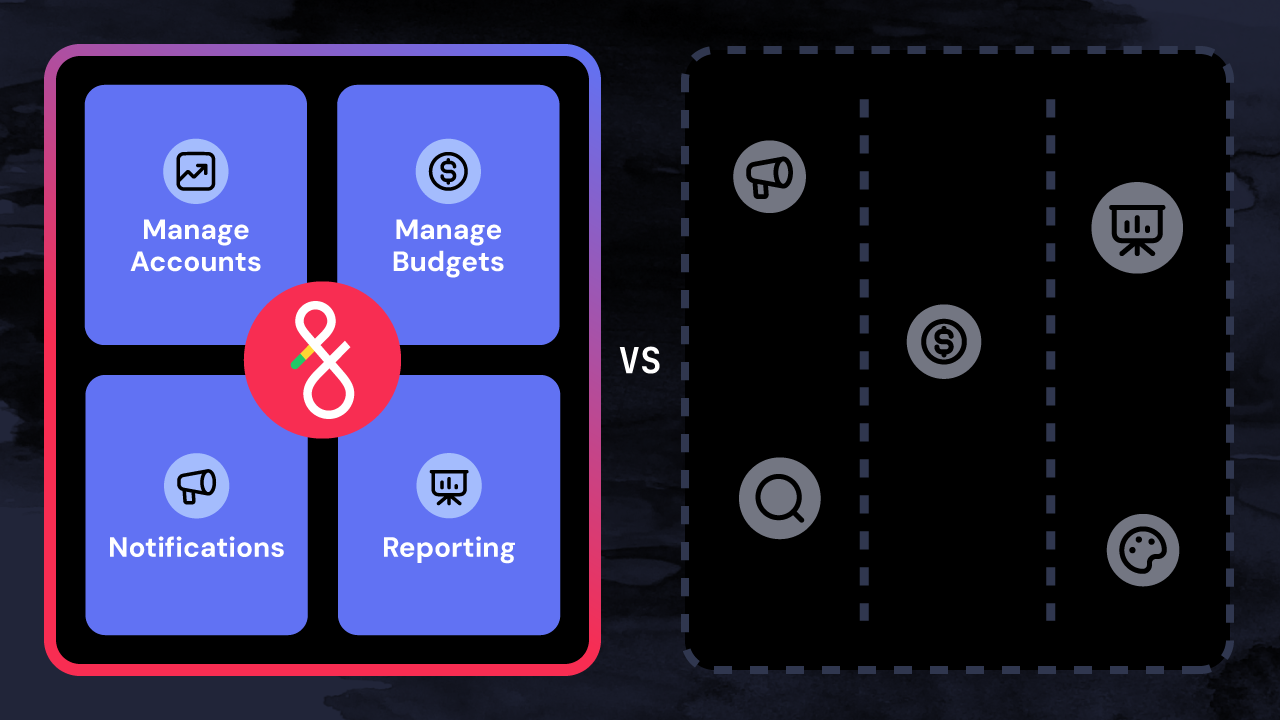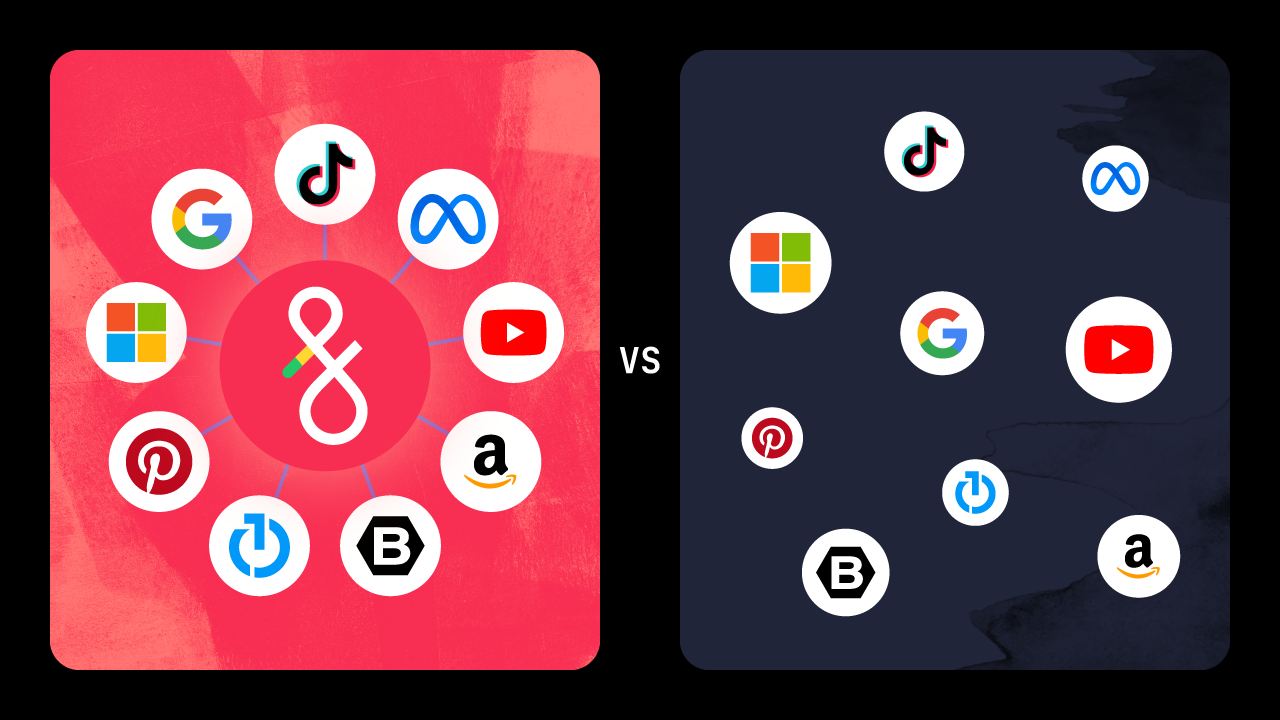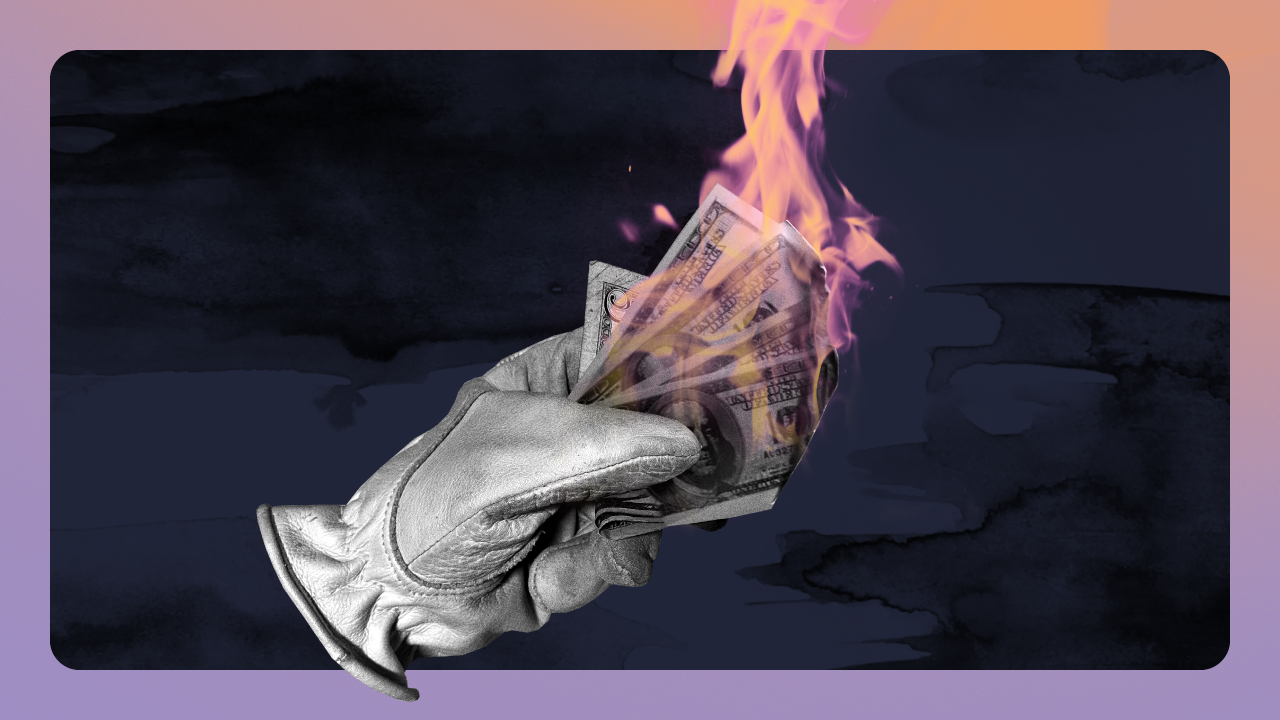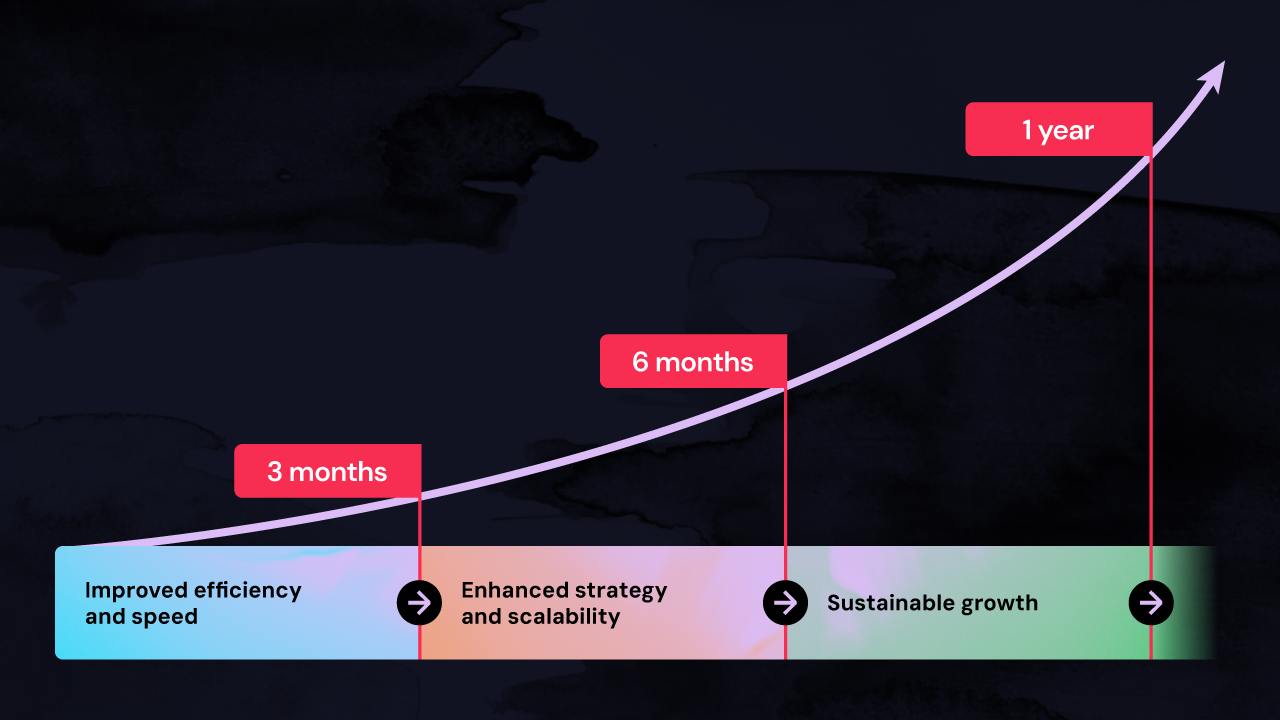Every Q4, ad strategists brace for a whirlwind of seasonal promotions, limited inventory, and high client demands. The holiday season brings both increased performance pressure and opportunities to drive major revenue growth, along with elevated costs.
You want to make the most of this daunting season without feeling overwhelmed. To do so, you’ll need new solutions to handle the expected (and unexpected) Q4 challenges that lie ahead.
In this article, we’ll explore five key automation strategies to help you save time across the entire AdOps spectrum: streamlining campaign execution, optimizing budgets, and enhancing targeting strategies.
Automatically reallocate budget to the most cost-effective channels in real time
It’s no surprise that Q4 consistently brings the highest CPMs of the year, across every channel. What’s more alarming, though, is that the average Q4 CPM has also increased on most channels.
For example, the average Q4 CPM increased from $13.28 in 2020 to $16.31 in 2023 on Meta (a 22.8% increase). Google’s Q4 CPM rose 39%, from a 2020 average of $15.28 to $21.28 in 2023. This means that achieving the same outcomes as in the past will probably cost more in Q4 this season compared to previous years.
If you’re managing multiple clients or accounts, it’s borderline impossible to track and act upon CPM spikes and dips across channels because budgeting data is siloed to each channel. How can you know you’re getting the most mileage out of every customer’s monthly spend if you can’t see budgets holistically? Manually managing and moving budgets across different publishers and campaigns is both cumbersome and complex, making it hard to guarantee that you’re putting funds toward the best-performing ads at any given time.
However, if you’re not constantly watching every platform simultaneously (and honestly, who can?), you could miss out on vital opportunities to make the most of your clients’ budgets during this quarter. On the other hand, you could also burn through your budget quickly if you’re not pausing or moving money away from underperforming channels with inordinately high CPMs.
Creating an integrated and automated budgeting strategy ensures that all budgets are holistically optimized. With all your publisher data syncing to a single automation-powered platform, you can easily see which campaigns, channels, or ads are excelling and which are underperforming.
You can even set up automation rules that automatically move money across channels when certain criteria arise. For instance, you can choose to move funds away from one channel when the CPM gets too high or toward another channel when the CPM reaches a more cost-effective amount.
Best of all, automation tools monitor every channel all day, every day. You have more important things to do than log in to multiple publishers every day (or multiple times a day) to ensure that budgets are running smoothly. Automation never sleeps, ensuring that you are getting the most bang for your buck even when you’re offline.
Automatic budget reallocations can be configured to activate in real time whenever optimal opportunities arise. This ensures that every advertising budget—across every channel, campaign, or account—is efficiently working for you even when you’re off the clock. Or, if you prefer, you can receive a notification when cost-saving opportunities arise if budget reallocations require approval.
Whatever your goals, automation removes budget management stressors while giving you full strategic control of Q4 funds across every channel and account.
Integrate CRM data for enhanced audience targeting
Audience targeting is always important. But in Q4, it’s vital. The marketplace is too crowded in Q4 to risk serving ads to the wrong prospects.
Studies also reinforce the idea that consumers want brands to engage with them in more meaningful, relevant ways in exchange for personal data. For instance, the Salesforce “State of the Connected Consumer” report revealed that 63% of Millennials and 58% of GenX’s are “willing to share data with companies in exchange for personalized offers and discounts.”
Merging multiple datasets—including publisher and CRM data—into one platform is a powerful way to generate niche audience segments. Automation enables you to do this without a huge lift in effort, too. By bringing your audience data into your advertising strategy, you can create highly targeted and effective campaigns that speak to specific buying personas across channels.
For example, let’s say you manage a national gym chain customer that uses CRM data to drive membership growth at multiple locations. This customer wants to drive in new members across their entire franchise portfolio (200+ locations) ahead of the “New Year’s Resolution” fitness rush.
By analyzing their CRM data alongside publisher audience data, you can tailor each gym location’s advertising efforts to their membership targets, ensuring each campaign aligns precisely with unique franchise goals. This approach not only enhances targeting accuracy but also reduces the manual effort required to implement more advanced targeting initiatives.
Combined with AI, you can analyze vast amounts of CRM and publisher data to identify patterns and behaviors that inform more predictive targeting efforts. Speaking of AI, let’s take a look at other ways AI can improve your Q4 efforts.
Use AI to analyze performance across campaigns
AI can always find the elusive needle in the haystack, regardless of where it's applied. This is particularly true when it comes to finding the most valuable insights within large data sets.
AI is an invaluable tool for ad strategists looking for optimization opportunities over multiple channels, campaigns, and platforms. After centralizing all your publisher and first-party data into one system, AI can provide actionable insights and recommendations. Whether you’re looking for bidding adjustment recommendations or information about your best-performing campaigns, using AI saves you both time and money during the most stressful time of the year.
Imagine you're managing holiday campaigns for a large e-commerce customer across multiple platforms: Google Ads, Facebook, and Amazon. Each platform is running dozens of campaigns, hundreds of ad groups, and thousands of keywords. Manually analyzing this data to find strategic campaign optimization opportunities would be incredibly time-consuming (if not impossible), especially during the rush that is Q4.
This is where AI comes in. By analyzing cross-platform data, AI can reveal performance improvement insights, such as: ]
"Campaign A on Google Ads is outperforming similar campaigns on Facebook by 30% in terms of ROAS.” From here, you could reallocate funds from Facebook to Google Ads to stretch your budget and drive better ROI.
Or maybe the AI uncovers this valuable observation:
"Keywords related to 'holiday gift sets' are showing a 25% higher conversion rate compared to last week across all platforms.” You could increase bids on these keywords and have AI provide other recommended keywords focused on holiday gift sets to expand upon what’s working.
AI saves you hours of data analysis by serving up these insights directly to you, almost instantaneously. This enables you to focus on implementing strategic changes that move the needle in the right direction. You can quickly act on these recommendations—adjusting budgets, bids, and ad copy—to maximize performance during a critical period.
Manage and pre-schedule holiday changes in bulk
As an ad strategist, you’re all too familiar with the influx of Q4 sales, promotions, and constant change requests coming from your customers. Logging into individual platforms, editing every ad (or creating new ones), and then switching everything out when promotions end is a huge waste of time.
After all, time is money…and you need to make the most of your time to drive the best results.
Bulk editing tools enable you to make copy or creative changes en masse across every platform, channel, or ad set—with one click, simultaneously. There’s no need to log into each platform or edit each ad set just to swap out “Black Friday” for “Cyber Monday.” (You can even make bulk changes to entire strings of text, not just individual words.)
Advanced bulk editing tools, like those at Fluency, also let you schedule specific changes in advance. Instead of manually removing every Cyber Monday promotion on every channel, you can simply schedule your previous evergreen campaigns to go back up after a sale ends.
Editing ad copy or creative in bulk also drastically reduces the likelihood of errors. This is vital when you’re managing multiple promotions for dozens of different clients. Using automation to make global changes to ad sets ensures consistency in messaging without running the risk of typos or mistakes.
In addition to saving time and reducing errors, bulk editing can also help you optimize your campaigns. You can quickly test different promotional ads across multiple channels and then use AI to determine what resonates best with audiences. You can make strategic, informed decisions on future campaigns and generate even better results.
Improve your Quality Score by automatically managing publisher recommendations
Google’s Quality Score is one of those annoying-but-important components of digital advertising. It’s not exactly complicated to review and take action on these recommendations, but it does take time.
And in Q4, you don’t have time to do anything. That’s why most advertisers end up pushing off Quality Score recommendations during busy seasons: they’re just trying to keep the lights on.
Neglecting your Google Quality Score recommendations could cost you, both financially and in terms of performance. In a 2023 study by WordStream, it was found that a high Google Quality could reduce CPC (cost per conversion) anywhere between 16-80%, highlighting the importance of this often-overlooked aspect of campaign management.
We’ve run similar Google Quality Score tests here at Fluency, too. Some advertisers may believe that Google Quality Score isn’t a vital component of their advertising efforts. However, we’ve found that clients who consistently respond to Google’s recommendations—whether you accept them or reject them—have lower CPCs, more conversions, and better performance overall.
It’s important to note that it’s not just about appealing to Google and accepting every recommendation. It’s about guiding the platform to understand what you want done with your ads. This is why rejecting these recommendations also improves your quality score: taking any action is better than nothing.
What if you could reap the benefits of a high Quality Score without putting in the time and effort of manually reviewing each recommendation? With automation, you can quickly and easily manage Google recommendations for every account in one centralized place. You can even set up automated responses to specific types of recommendations, saving you even more time.
Maintaining a high Google Quality Score is critical if you need to maintain your partner status, which is often the case for agencies. Addressing recommendations for every account in one place saves you countless keystrokes, making it easy to catch up on notifications for every customer you manage. Automating responses to Google’s recommendations, whether that means accepting or rejecting these recommendations, can even help you maintain a high Quality Score without any additional effort.
Face year-end head-on
Automation and AI are valuable tools to help you turn seasonal challenges into opportunities. You can manage budgets more efficiently, target your warmest prospects more effectively, and leverage AI for crucial performance insights. Simplifying the required effort for the most mundane, time-consuming tasks frees you up for valuable strategic work.
Embrace these tools to alleviate workloads and boost campaign performance so you can meet holiday demands without burnout. If you want to learn more about how automation and AI can transform your advertising operations all year long, download our comprehensive guide on AI and automation for digital advertisers.

